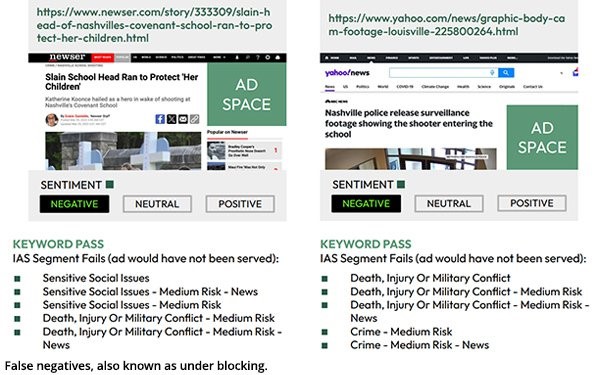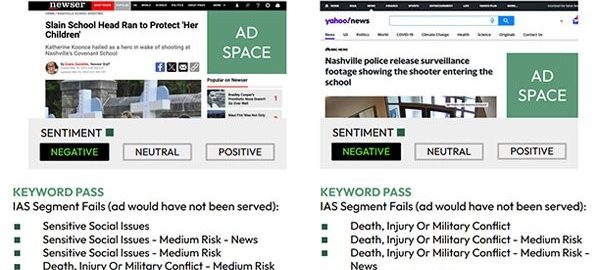IAS Brand Safety, Suitability Shows How Marketers Identified 61% Of Dangerous Content

Measure, calibrate, and optimize are part of a new strategy outlined in a white paper from Integral Ad Science released Tuesday.
For advertisers it has become a critical part of managing media quality for campaigns.
More than half of the industry experts participating in the recent Integral Ad Science (IAS) survey released Tuesday called brand safety and suitability a top priority. And more than half of advertisers said they have revised spending based on the topic.
IAS defines “brand safety” as protecting brands from the “worst of the worst,” such as violence and drugs.
Brand suitability focuses on allowing brands to run ads adjacent to content that aligns with their values and preference. It can include risk levels, but also niche topics like gaming content.
All of this must balance with campaign objectives. If not monitored carefully, they can all be at odds with each other. Advertisers can achieve balance and protection, according to Jeremy Kanterman, vice president of research and insights at Integral Ad Science, by following an approach that the white paper outlines.
That approach is to measure, calibrate, and optimize. IAS has been offering this service for years, but just recently formalized it in the past two years. Many of the use cases highlighted in the white paper demonstrate that strategy and recommendations.
“Measurement tells clients what part of the settings are working,” Kanterman said. “Maybe the strategy is too broad. Maybe it solely relies on keywords, but alone it’s not enough.”
Keywords are one tool being used, but sometimes an advertiser just wants to solely use them. Understanding the role of context and how it can alleviate rigid brand safety and suitability parameters is key to how marketers can optimize advertising strategies. The biggest challenges often seen is an over reliance on keyword lists. Sometimes between 2,000 and 3,000.
There are two shortcomings — over-blocking and under-blocking.
One example is when the keyword is found in the URL string of the page, and then the impression is blocked. But it does not consider sentiment, contextual classification, or emotion of the content — it’s possible that the content aligns with the brand’s goal, and is simply blocking the page because of the keyword.
IAS has eight brand-safety category segment and five risk levels per category to help balance the strategy.
Marketers can look at context through a consumer lens as an effective suitability strategy that mitigates brand risk, but also addresses the challenge of scale.
Brand safety and suitability parameters for content adjacencies are inherently “brand-centric” and focus on attributes that are consistent with the brand identity — but the consumer perspective should also be considered, according to the white paper.
Some 80% of consumers say ads related to the content they view impact their perception of the brand, according to The Congruence Effect, an IAS study published January 2021.
About 72% of consumers say their perception of an ad is impacted by the surrounding content on the page, and 70% of consumers find it at least somewhat important that advertising is relevant to the content being consumed, according to The Power of Context, an IAS study published in 2020 and 2021, respectively.
“One strategy doesn’t fit all when it comes to safety and suitability,” Kanterman said. “You want to be thoughtful of your risk and tolerance levels. On suitability, if you’re blocking everything you miss out on potential opportunities.”
(3)







